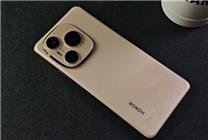Is the iPhone Air Discontinued? A Close Look at Apple’s Latest Innovations
Summary:
- Recent rumors about the discontinuation of the iPhone Air have surfaced but appear to be exaggerated.
- The real issue lies in production adjustments, not outright cancellation, reflecting Apple’s strategic approach to sales volume.
- The iPhone Air serves as a testing ground for future technologies, emphasizing material innovation, design layout, and miniaturization.
Rumors have been swirling that the iPhone Air has been discontinued, largely fueled by a blog that claimed poor sales were behind this drastic move. However, a deeper exploration reveals that these assertions have been taken out of context. The actual scenario involves a temporary halt in the production of metal parts, a routine adjustment in Apple’s manufacturing process meant to align with current demand levels.
Production Insights
Apple has made it clear that it plans to initiate further production of the iPhone Air’s components once it receives a sufficient number of orders. Initial sales expectations were modest; insiders had indicated that Apple anticipated sales in the low millions, particularly when compared to the tens of millions projected for both the standard and Pro versions of the iPhone 17. With these lower expectations, a decline in sales for the iPhone Air was somewhat anticipated.
The Technical Significance of the iPhone Air
Beyond the speculation surrounding its sales, the iPhone Air stands as a noteworthy exploration in Apple’s technological advancements. Contrary to the belief that its primary role is to test the waters for future folding screens, the iPhone Air appears to serve a broader purpose. A hands-on analysis of the device reveals that it is more of a pioneering model that charts Apple’s technological roadmap for the next decade.
Key Areas of Exploration:
- Material Technology
- Stacking Design
- Component Miniaturization
Material Innovation
Among its contemporaries, the iPhone Air is distinctively the only model this year to utilize titanium—a material known for its high strength-to-weight ratio. However, Apple employs grade 5 titanium alloy rather than pure titanium. This alloy comprises 90% titanium, along with aluminum and vanadium, enhancing characteristics like heat resistance and toughness.
The application of this alloy in the iPhone Air allows Apple to produce thinner frames without compromising durability. Testing has shown that the device can resist bending while also retaining its structural integrity, offering future promise for thinner, more resilient smartphones.
Stacking and Design Efficiency
The internal architecture of the iPhone Air embraces a three-stage layout akin to high-end Android models. This reconfiguration not only guards against damage to the motherboard during flex but also maximizes internal space for the battery. In fact, nearly 60% of the internal volume is utilized to house a 3149mAh battery, although its performance hasn’t dramatically outpaced previous models during rigorous testing.
Miniaturization of Components
One of the leading-edge features of the iPhone Air is its double-layer laminate motherboard, which is impressively thin and lightweight. This innovation mirrors the compact packaging techniques typically found in high-performance wearable technology. Additionally, the absence of traditionally bulky components like capacitors and inductors indicates Apple’s move towards integrated, system-level packaging technology. This change improves performance while reducing the overall size of the device.
Conclusion: Design-Focused Future
The iPhone Air exemplifies Apple’s commitment to a design-first philosophy, integrating advanced materials and engineering solutions to push the boundaries of what is possible in smartphone design. It not only embraces innovative technologies but also lays the groundwork for future iterations of Apple products.
Instead of merely being known as the iPhone Air, this model could more aptly be termed the iPhone X, symbolizing innovation, exploration, and the relentless pursuit of enhancing user experience—essentially a nod toward Apple’s vision of a future where smartphones blend seamlessly with cutting-edge tech.
As we anticipate what’s next for Apple, one thing is clear: the iPhone Air shouldn’t be written off but rather viewed as a critical stepping-stone in Apple’s trajectory toward pioneering futuristic mobile devices.







